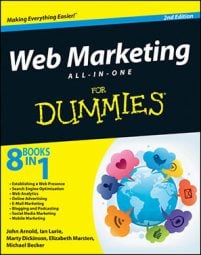Text links in web marketing e-mails are clickable words or phrases that result in certain actions when clicked. Links use HTML to tell the computer what to do when someone clicks the link, so your e-mail links need to contain HTML to work in e-mail programs.
If you’re using raw HTML to create links for your e-mails, a simple link to a website looks like this:
<a href="http://www.<i>yourwebsite</i>.com"><i>Link Text Here</i></a>
Most e-mail programs and EMPs allow you to enter a URL into a user interface, and the program then takes care of adding the HTML behind the scenes to turn your text into a link that points to the URL you entered.
How to link to your website
To link to a landing page on your website (HTML websites only), follow these steps:
Open your web browser and navigate to the page where you want your link to point.
Highlight all the text in your browser’s address bar (including the http part).
Copy the text:
Windows: Right-click the selected text and choose Copy.
Mac: Control-click the selected text and choose Copy.
Paste the URL into your e-mail program’s link-creation user interface.
Windows: Right-click and choose Paste.
Mac: Control-click and choose Paste.
![[Credit: Courtesy of Constant Contact]](https://www.dummies.com/wp-content/uploads/340241.image0.jpg) Credit: Courtesy of Constant Contact
Credit: Courtesy of Constant Contact
How to link to an e-mail address
Instead of linking text to another web page, you might want to link text to an e-mail address. This type of link opens a new message in your visitor’s default e-mail program, often with the To text box filled with an e-mail address you designate in the link.
To link to an e-mail address, type mailto: followed by the e-mail address you want to link to into your e-mail program’s link-creation user interface. For example
mailto:[email protected]
If you want an e-mail link to prefill the Subject line or From line, or if you want to use an e-mail link to include several e-mail addresses, you can find a free e-mail link encoder that automatically generates the code you need at the following website:
<a href="http://email.about.com/library/misc/blmailto_encoder.htm">http://email.about.com/library/misc/blmailto_encoder.htm</a>
E-mail links tell the user’s computer to open the default e-mail program on the user’s computer. If the person clicking your link uses a web-based e-mail program (like Yahoo!) instead of a desktop e-mail program (like Outlook), the link won’t allow him to use his web-based application. To eliminate confusion for web-based e-mail users, spell out the e-mail address in your link so that folks can type it in their preferred e-mail program when necessary.

